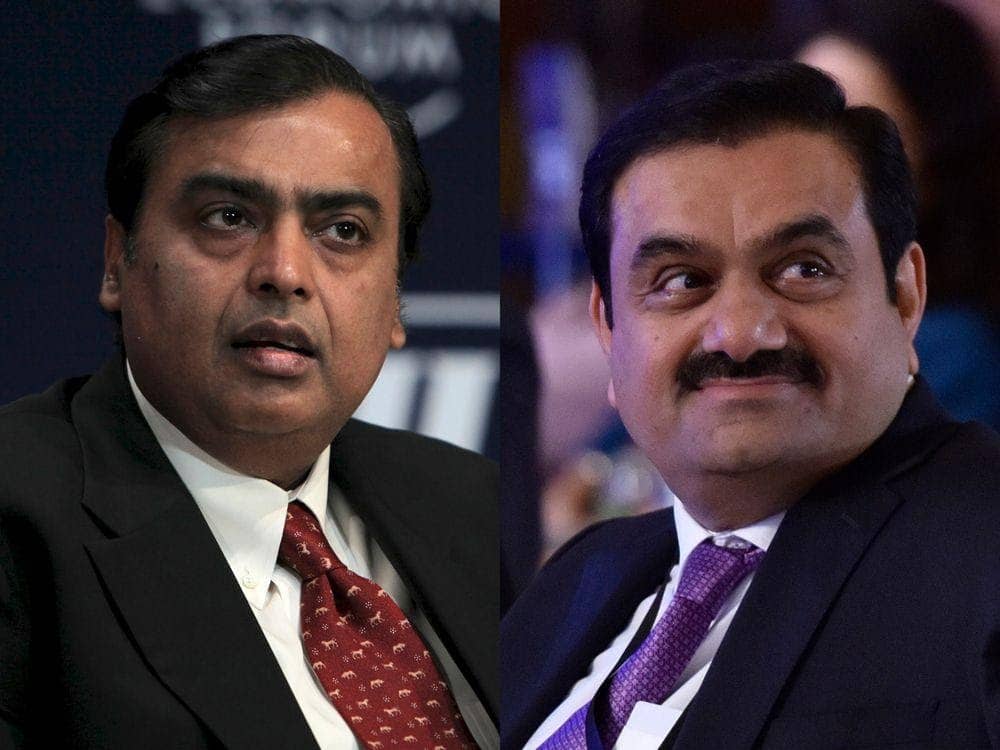Mukesh Ambani, Chairman and CEO of Reliance Industries, presented one of the company’s most ambitious initiatives at its 44th Annual General Meeting (AGM) a few days ago. Reliance is ready to enter the green energy market after disrupting the Retail and Telecom sectors. The statement was particularly intriguing due to the plan’s minute specifics and timeliness. “Reliance will thus create and offer a fully integrated, end-to-end renewables energy ecosystem,” said Ambani. The magnitude of Mukesh Ambani‘s investment has drawn attention from throughout India.
Jamnagar, Gujarat will host the Dhirubhai Ambani Green Energy Complex. The enormous project will take up 5,000 acres of land. Jamnagar, Gujarat is also home to the Reliance Jamnagar refinery. It is the world’s largest refinery.
Reliance plans to invest up to $10 billion in this massive project. By 2030, this ambitious strategy seeks to generate up to 100 GW of renewable energy. By 2030, the Indian government has set a goal of producing 450 GW of green energy. Reliance will create 22 percent of India’s total green energy by 2030 if all goes according to plan.
The $10 billion investment may appear to be a large sum. However, several analysts and experts feel that the investment made by Reliance is unrelated to the company’s other megaprojects. In 1996, for example, Reliance invested $13 billion in the refinery project. The initial investment is now valued at over $65 billion.
Four mega factories will be housed in the New Energy Mega-Complex. Solar Cell (PV) manufacturing, Electrolyte manufacturing, Storage Battery manufacturing, and Hydrogen Fuel Cell manufacturing are all included. Reliance is poised to enter a battle with four of India’s largest corporations and business families, according to the fine print in the details.

Who will be Reliance's main competitor in the Green Energy plan?
Adani Group is now India’s largest operator in the green energy sector. The Tata Group is currently preparing for a $400 million IPO of its green energy division. JSW Energy (Jindal Family) is also contemplating a $10 billion investment in the green energy sector. The PSU, NTPC, has previously stated its ambition to generate 60 GW of green energy.
RIL will now be in direct rivalry with the Adani group because of the move. Adani Solar has 3.5 gigawatts of yearly solar photovoltaic output capacity, whereas Adani Green Energy has a portfolio of 25 gigawatts of completed and under construction solar photovoltaic projects.
RIL plans to build four gigafactories to produce integrated solar photovoltaic modules, innovative energy storage, green hydrogen electrolysers, and fuel cells to convert hydrogen into motive and stationary power.
Reliance would fight directly with Adani Group, Tata Group, and steel tycoon Jindal Group with its new energy plan. With some of India’s wealthiest and most powerful people battling it out, the green energy sector will be one to monitor and profit from in the future.
What makes the timing of this new company so intriguing?
This new energy plan’s timing is intriguing. The government of India constituted a 4,500 crore PLI (Production Linked Incentive) in solar cell production two months ahead of Reliance AGM. Preferences will be offered depending on production capacity, according to the ministry. Reliance, which has one of the largest industrial facilities, could be the biggest benefactor of the PLI scheme.

Who will be the most benefitted by this plan?
China supplies 80 percent of India’s solar cells. The cost of solar cells may drop dramatically because of Reliance’s entry into the solar cell manufacturing sector. This could lead to Reliance’s domination in terms of pricing, supply, and law in this industry.
How is Reliance going to fund this massive project?
To make an ambitious concept a reality, a significant investment is required. Reliance has already pledged a $10 billion investment. So, how does Reliance plan to fund this capital expenditure? The sale of a stake in its refining business is the most likely response. The long-awaited transaction with Saudi Aramco, according to Mukesh Ambani, could be finalized this year.

Is there anything more to this strategy?
Reliance Industries Ltd (RIL) released a Statement saying, five years after rocking the Telecom sector with the launch of Jio, just another game-changing move: a massive push into green energy. Underneath the “New Energy and New Materials” branch, the corporation plans to expand into solar power generation and manufacturing, hydrogen production, e-fuels, and energy storage. It will also serve as a platform for renewable energy project financing to help these industries access long-term global resources.
Reliance is known for causing havoc in the industries it enters. Reliance has always challenged the competition to its boundaries, whether it was in the mobile network sector in the early 2000s with Reliance Infocomm, retail with Reliance Retail, or recently 4G telecommunications with Jio. We may expect the same thing to happen in India’s green energy sector. The end users will get the greatest benefits.
Written by- Niki Shah
Edited by- Riya Shah
